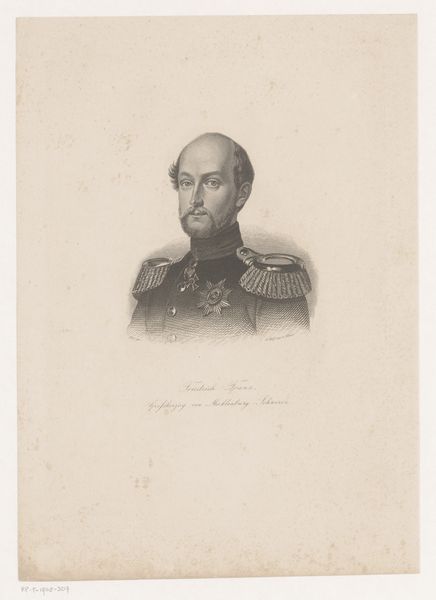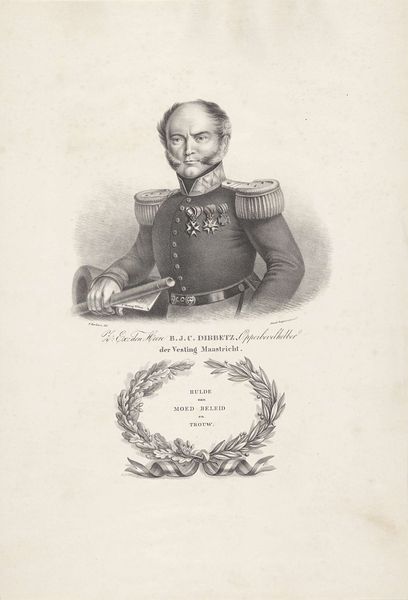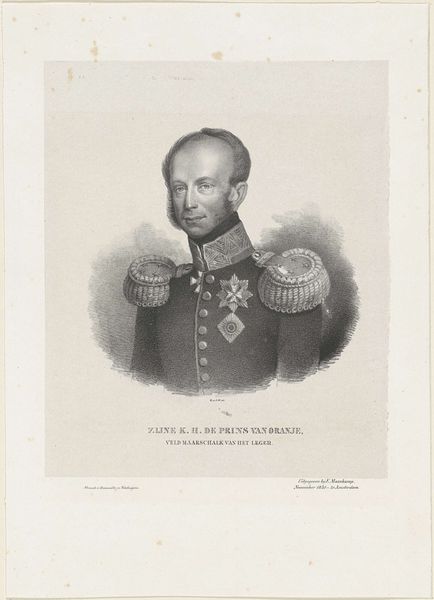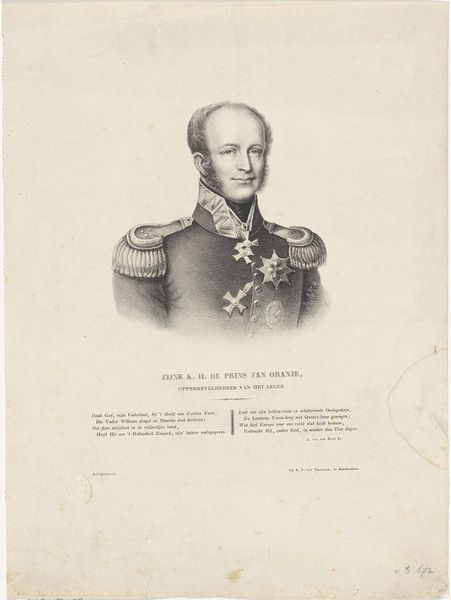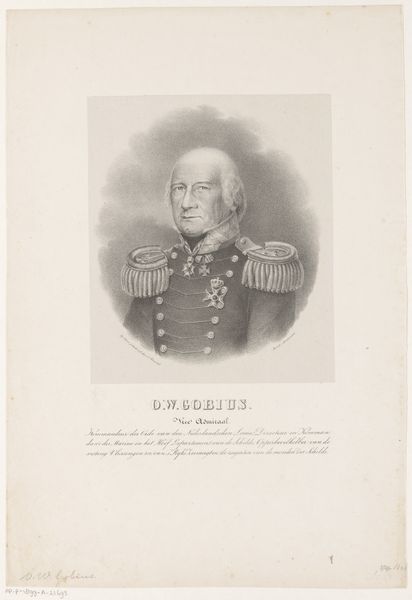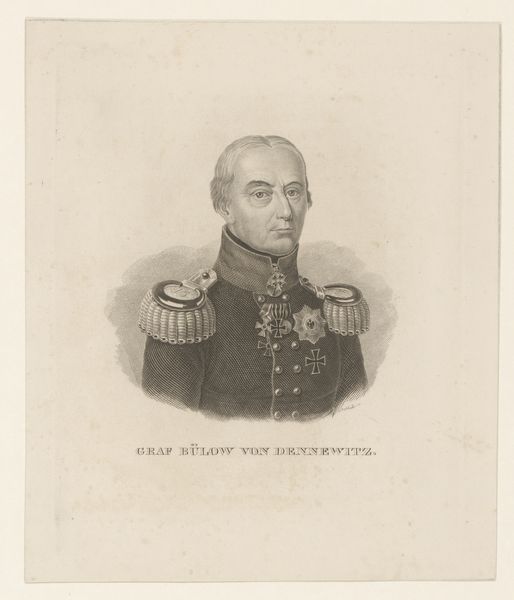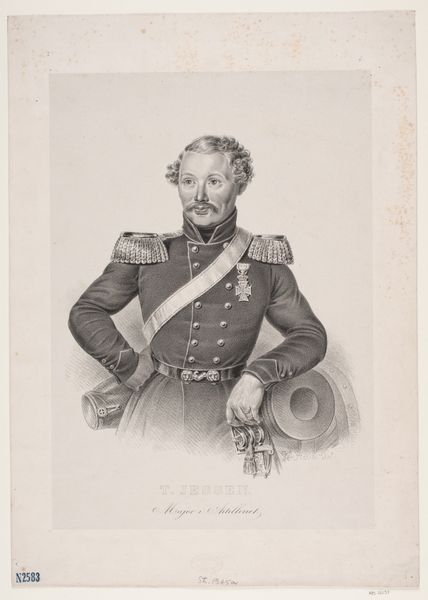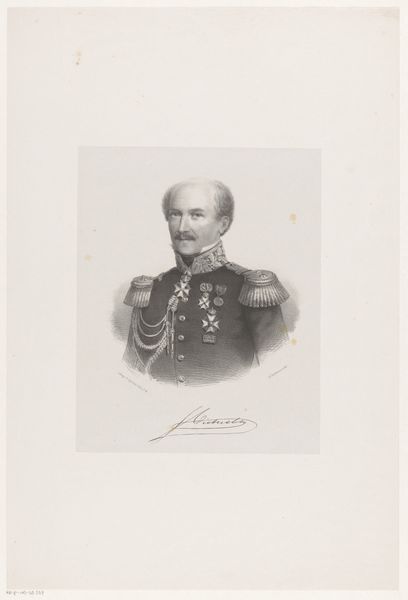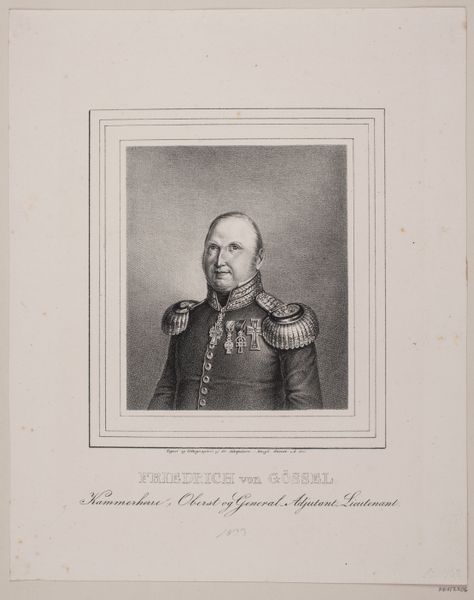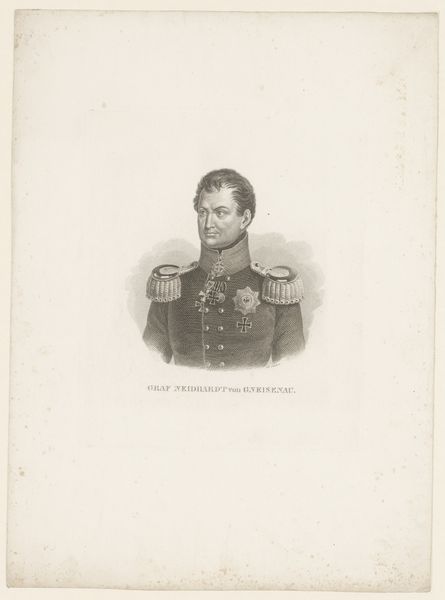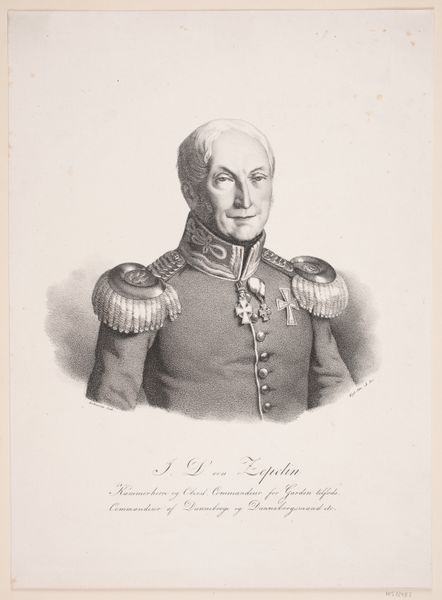
print, engraving
#
portrait
#
pencil drawn
# print
#
pencil sketch
#
old engraving style
#
pencil drawing
#
portrait drawing
#
pencil work
#
history-painting
#
engraving
#
realism
Dimensions: height 416 mm, width 317 mm
Copyright: Rijks Museum: Open Domain
Curator: This is Antonie Waldorp’s "Portret van Bernardus Johannes Cornelis Dibbets," made between 1831 and 1843. It's currently held here at the Rijksmuseum. Editor: My first thought is that this print really captures a sense of formidable authority. The stern gaze and rigid posture certainly project a powerful image. The shading seems to create the illusion of weight, especially in his shoulders. Curator: Indeed. This portrait's presence within the Rijksmuseum connects to its function in solidifying Dibbets' public image as a military figure. Engravings like this were tools for circulating images of authority, shaping public perception of individuals and reinforcing social hierarchies. Editor: Right, and the choice of engraving itself speaks volumes. Consider the labor-intensive process, the skill required to translate the image onto a plate, and then the multiple impressions produced. Each print becomes a commodity, furthering the reach of his image through social spheres. The materiality impacts dissemination, shaping visibility of the subject as an officer. Curator: Absolutely. Furthermore, portraits of military leaders during this period served as visual propaganda, subtly promoting nationalistic sentiments and glorifying the military institution itself. The distribution and display of such images within specific social spaces conveyed power, respectability, and allegiance. Editor: It’s fascinating how the print manages to highlight certain textures – the details on the uniform epaulettes and the lapel against the relatively smooth expanse of his face and hair. It is made by a series of repetitive actions that make it exist beyond one single work of art. It shows not only attention to social status, but reveals to viewers, through his features, that he had some role in the production itself. Curator: I agree. The contrast helps convey his commanding status while grounding him in the broader socio-political landscape of the time. The emphasis placed on the symbols of his rank suggests an active negotiation between individual identity and his public role. It’s a clear reminder of the power of art to perpetuate and reinforce established systems. Editor: Reflecting on this portrait, I appreciate the artist’s use of what seems to be, with just line and shade, how he could shape perceptions of power and standing so concretely using an essentially reproducible image form and I really value the time that has been put into the piece of artwork, a piece which would later travel as prints. Curator: Precisely. This detailed print serves as a time capsule, not only capturing a likeness, but revealing much about the socio-political values of the 19th century, values expressed through an artwork like this one.
Comments
No comments
Be the first to comment and join the conversation on the ultimate creative platform.
